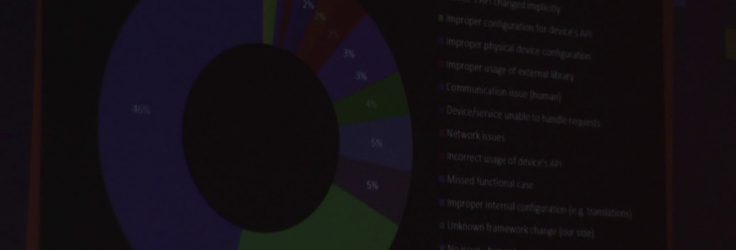Yet another time, it comes to the Internet of Things or IoT. These three magical letters that always bring a picture of a fully-automated surrounding world where connected software-powered devices substitute humans in numerous daily activities. One way or another, the Internet of Things is already more of a fact than a Sci-Fi concept and many companies try to conquer a bigger part of the market, offering the customers bespoke IoT platforms that integrate numerous connected devices produced by renowned manufacturers. However, there are no standards accepted for the architecture and actual behavior of smart device APIs and the means of connectivity and communication are almost unlimited, which brings the mentioned platforms to the ugly aftermath: they become prone to bugs. So, how to prevent our smart device integration platform from bugs and make it scale the market needs without issues?
In order to at least partially answer this question, being part of the team that is responsible for integrating new devices into a big leading IoT platform for more than 4 years now myself, I will share my experience how we managed to resolve a lot of issues related to connected device integration and what actions and adaptations our team had to undergo in order to improve the quality of our delivered product. We are going to have a deeper look over the bugs that our team solved during the last year statistically: what was their type, what components they affected, what time was needed to discover the cause and fix for a given defect, what percent of them were real blockers and so on. Further ahead, we will take a look over what structural changes our team had to go through and what mistakes we could have easily avoided in advance. Finally, practical advice is going to be shared in order to clarify how to spot potential bugs and how to improve the quality of the connected device IoT platform we are developing.
Video producer: https://istacon.org/

